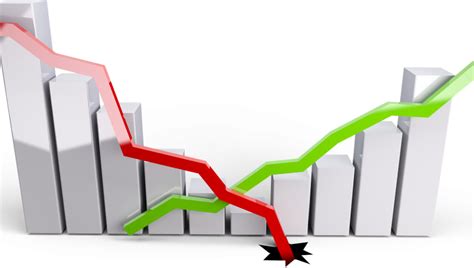
Investor home sales have surged to record levels, with investors offloading properties at the highest rate in years, even as losses mount in several key states, signaling a potential shift in the housing market landscape.
The surge in investor selling is particularly pronounced as mortgage rates remain elevated and home price appreciation slows, leading to increased losses for investors in certain markets. According to a recent report, investors sold a record share of homes in the first quarter of 2024, prompting concerns about market stability and future price trends.
Investor Exodus: A Market Correction or Strategic Retreat?
Investors are selling homes at the highest rate in at least a decade, comprising 8.4% of all home sales in the first quarter of 2024. This figure is up from 5.8% a year earlier and surpasses the previous high of 7.9% recorded in early 2022. The increase in selling activity reflects a broader trend of investors adjusting their portfolios in response to changing market conditions.
“Investors are increasingly choosing to sell, likely due to a combination of factors including cooling home price growth, elevated mortgage rates, and a desire to capitalize on recent gains,” said a leading housing market analyst. “This shift could have significant implications for local housing markets, particularly in areas where investor activity has been concentrated.”
The trend is not uniform across the country. While some states are seeing significant investor losses, others remain profitable markets. The decision to sell is often influenced by local market dynamics, including rental income potential, property taxes, and the overall economic outlook.
Mounting Losses in Key States
The financial impact of this selling trend is not evenly distributed, with some states experiencing considerable investor losses. Five states, in particular, have seen a notable increase in the proportion of homes sold by investors at a loss. These states include:
-
Louisiana: Louisiana has seen the highest proportion of investor sales at a loss. Several factors contribute to this trend, including slow economic growth and an oversupply of rental properties, leading to lower rental income and reduced profitability for investors. Additionally, the cost of maintaining properties in Louisiana, given the frequent hurricanes and storm damages, are particularly high.
-
Mississippi: Similar to Louisiana, Mississippi faces economic challenges that impact the housing market. Declining population and limited job opportunities are contributing to lower demand for housing and increased investor losses. The housing market has never fully recovered since the 2008 financial crisis, adding to investor losses.
-
Maryland: Maryland’s housing market is facing challenges due to high property taxes and regulatory hurdles, which are impacting investor returns. Furthermore, stringent landlord-tenant laws have made it more difficult for investors to manage rental properties efficiently, contributing to losses.
-
Oklahoma: Oklahoma’s real estate market has been affected by fluctuations in the energy sector, which is a major driver of the state’s economy. Economic downturns in the energy industry can lead to job losses and reduced housing demand, impacting investor profitability. There have been recent increases in property taxes and homeowners insurance as well.
-
Idaho: While Idaho has experienced significant population growth in recent years, the housing market has become increasingly competitive, leading to slower price appreciation and increased losses for investors who purchased properties at peak prices. The surge in migration into Idaho caused a sharp rise in housing prices during the pandemic, which has since cooled off, leaving investors who bought high now selling at a loss.
In these states, investors are facing a combination of factors that are eroding their profits and compelling them to sell properties, even at a loss. These factors include:
- Slowing Home Price Appreciation: After years of rapid growth, home prices are stabilizing or even declining in some markets, reducing the potential for quick profits.
- Rising Mortgage Rates: Elevated mortgage rates increase the cost of financing investment properties, making it more difficult for investors to generate positive cash flow.
- Increased Operating Costs: Higher property taxes, insurance premiums, and maintenance expenses are squeezing investor profit margins.
- Changing Rental Market Dynamics: Increased supply of rental properties and shifting tenant preferences are putting downward pressure on rental rates.
Regional Variations and Market Dynamics
While the overall trend indicates a surge in investor selling, there are significant regional variations in the housing market. Some areas continue to be attractive to investors due to strong economic growth, high rental demand, and favorable regulatory environments.
For example, states with robust economies and growing populations, such as Texas and Florida, continue to see healthy investor activity. However, even in these markets, investors are becoming more selective and focusing on properties with strong cash flow potential.
“Investors are increasingly focusing on markets with strong economic fundamentals and a diversified employment base,” explained a real estate investment strategist. “They are also prioritizing properties that offer attractive rental yields and the potential for long-term appreciation.”
Impact on the Housing Market
The increase in investor selling could have several implications for the broader housing market. A larger supply of homes for sale could put downward pressure on prices, potentially benefiting first-time homebuyers and other prospective purchasers.
However, a sudden influx of investor-owned properties could also destabilize certain markets, particularly if there is a lack of demand from owner-occupants. This could lead to a prolonged period of price declines and increased foreclosures.
“The impact of investor selling will depend on the specific characteristics of each local market,” noted a housing economist. “In areas with strong demand and limited inventory, the effect may be minimal. However, in markets with weaker fundamentals, increased investor selling could exacerbate existing challenges.”
Strategies for Investors in a Changing Market
In light of the changing market dynamics, investors need to adopt a more strategic approach to their real estate investments. This includes:
- Conducting thorough due diligence: Before acquiring a property, investors should carefully analyze the local market, including rental rates, vacancy rates, and property taxes.
- Focusing on cash flow: Investors should prioritize properties that generate positive cash flow, even if appreciation potential is limited.
- Managing operating costs: Investors should actively manage their operating costs, including property taxes, insurance, and maintenance expenses.
- Diversifying their portfolios: Investors should diversify their portfolios across different property types and geographic locations to mitigate risk.
- Adapting to changing tenant preferences: Investors should be aware of changing tenant preferences and adapt their properties accordingly, including offering amenities such as high-speed internet and pet-friendly policies.
Future Outlook
The outlook for the housing market remains uncertain, with many factors influencing future trends. These include:
- Interest Rates: Changes in interest rates will continue to impact the affordability of homes and the attractiveness of real estate investments.
- Economic Growth: Economic growth will drive demand for housing and influence rental rates and property values.
- Demographic Trends: Demographic trends, such as population growth and migration patterns, will shape the demand for housing in different regions.
- Government Policies: Government policies, such as tax incentives and zoning regulations, will impact the attractiveness of real estate investments.
“The housing market is constantly evolving, and investors need to stay informed and adapt to changing conditions,” concluded a real estate market analyst. “By adopting a strategic approach and focusing on long-term value, investors can navigate the challenges and capitalize on the opportunities that arise.”
Frequently Asked Questions (FAQs)
- Why are investors selling homes at a record rate?
- Investors are selling due to a combination of factors including cooling home price growth, elevated mortgage rates, and a desire to capitalize on recent gains. “Investors are increasingly choosing to sell, likely due to a combination of factors including cooling home price growth, elevated mortgage rates, and a desire to capitalize on recent gains,” said a leading housing market analyst.
- Which states are experiencing the most investor losses?
- The states with the most investor losses include Louisiana, Mississippi, Maryland, Oklahoma, and Idaho. These states are facing a combination of economic challenges, high property taxes, and increased operating costs.
- How does investor selling impact the overall housing market?
- Increased investor selling can put downward pressure on home prices, potentially benefiting first-time homebuyers. However, a sudden influx of investor-owned properties could destabilize certain markets, particularly if there is a lack of demand from owner-occupants.
- What strategies should investors adopt in a changing market?
- Investors should conduct thorough due diligence, focus on cash flow, manage operating costs, diversify their portfolios, and adapt to changing tenant preferences.
- What factors will influence the housing market in the future?
- Future housing market trends will be influenced by interest rates, economic growth, demographic trends, and government policies.
Detailed Analysis: State-by-State Breakdown of Investor Activity
To further understand the dynamics of investor home sales and losses, a detailed analysis of each of the five states experiencing the most significant challenges is essential. This analysis will consider local economic factors, housing market trends, and specific conditions impacting investor profitability.
Louisiana: Economic Stagnation and Natural Disasters
Louisiana’s economy has struggled in recent years, with slow growth and high unemployment rates compared to the national average. The state is heavily reliant on the oil and gas industry, which has been subject to price volatility and environmental regulations, impacting overall economic performance.
The housing market in Louisiana has also faced challenges, with a relatively high supply of homes for sale and slow price appreciation. In addition, the state is prone to natural disasters, such as hurricanes and floods, which can cause significant property damage and increase insurance costs.
For investors, these factors translate into lower rental income, higher operating expenses, and increased risk of property damage. As a result, many investors are choosing to sell their properties, even at a loss, to avoid further financial strain.
Mississippi: Population Decline and Limited Job Opportunities
Mississippi faces similar economic challenges as Louisiana, with a declining population and limited job opportunities. The state has struggled to attract new businesses and industries, leading to a stagnant economy and limited housing demand.
The housing market in Mississippi has been particularly weak in rural areas, where population decline is most pronounced. In these areas, there is often a surplus of homes for sale and a lack of potential buyers, making it difficult for investors to sell their properties at a profit.
In addition, Mississippi has relatively low rental rates compared to other states, making it challenging for investors to generate positive cash flow from rental properties. The combination of these factors has led to increased investor losses and a surge in selling activity.
Maryland: High Costs and Regulatory Burdens
Maryland’s housing market is characterized by high property taxes, expensive insurance, and stringent regulatory requirements, which can significantly impact investor profitability. The state’s proximity to Washington, D.C., contributes to higher living costs and a competitive housing market.
Furthermore, Maryland has strict landlord-tenant laws that favor tenants, making it more difficult for investors to manage their rental properties effectively. These laws can make it challenging to evict non-paying tenants or enforce lease agreements, leading to financial losses for investors.
The combination of high costs and regulatory burdens has made Maryland a less attractive market for real estate investors, leading to increased selling activity and losses.
Oklahoma: Energy Sector Volatility and Market Fluctuations
Oklahoma’s economy is heavily dependent on the energy sector, particularly oil and natural gas production. Fluctuations in energy prices can have a significant impact on the state’s economy and housing market.
During periods of low energy prices, Oklahoma experiences job losses and reduced economic activity, leading to lower demand for housing and declining property values. This can result in losses for real estate investors who purchased properties during boom periods.
In addition, Oklahoma has experienced a surge in new housing construction in recent years, which has increased the supply of homes for sale and put downward pressure on prices. This has further contributed to investor losses and selling activity.
Idaho: Cooling Market and Price Adjustments
Idaho experienced rapid population growth and housing price appreciation during the COVID-19 pandemic, as people migrated from more expensive states seeking affordable living and outdoor recreation opportunities. However, the housing market has since cooled off, with prices stabilizing or even declining in some areas.
Investors who purchased properties at the peak of the market are now facing losses as prices adjust to more sustainable levels. In addition, rising mortgage rates have made it more difficult for investors to finance new acquisitions and refinance existing properties.
The combination of cooling prices and higher interest rates has led to increased investor selling activity in Idaho, as investors seek to minimize their losses and reallocate their capital to more promising markets.
Deeper Dive: Analyzing the Data and Trends
To gain a deeper understanding of the trends driving investor home sales and losses, it is important to analyze the available data and identify key patterns. This includes examining data on home prices, mortgage rates, rental rates, and investor activity in different markets.
According to recent reports, the median home price in the United States has increased significantly over the past decade, driven by factors such as low interest rates, strong economic growth, and limited housing supply. However, home price appreciation has slowed down in recent months, as interest rates have risen and the housing market has become more balanced.
Mortgage rates have also increased significantly, from historic lows during the pandemic to more normal levels in recent months. This has made it more expensive for homebuyers to finance their purchases and has put downward pressure on housing demand.
Rental rates have also been affected by the changing housing market. In some areas, rental rates have declined as the supply of rental properties has increased and demand has softened. This has made it more difficult for investors to generate positive cash flow from rental properties.
Data on investor activity shows that investors have been particularly active in certain markets, such as Sun Belt states and college towns. These markets have typically offered strong rental demand and the potential for high returns on investment. However, as the housing market has cooled off, investor activity has declined in some of these areas.
Investor Strategies: Adapting to Market Realities
In light of the changing market dynamics, real estate investors need to adapt their strategies to maximize their returns and minimize their risks. This includes:
- Focusing on Value-Add Opportunities: Instead of simply buying and holding properties, investors should focus on value-add opportunities, such as renovating properties, improving management, or adding amenities. These strategies can increase rental income and property values, making investments more profitable.
- Targeting Niche Markets: Investors should consider targeting niche markets, such as student housing, senior housing, or affordable housing. These markets may offer higher returns and less competition compared to the broader housing market.
- Leveraging Technology: Investors should leverage technology to streamline their operations and improve their decision-making. This includes using property management software, online marketing platforms, and data analytics tools.
- Building Relationships: Investors should build strong relationships with local real estate professionals, such as agents, lenders, and contractors. These relationships can provide valuable insights and opportunities.
- Staying Informed: Investors should stay informed about the latest market trends, economic developments, and regulatory changes. This will help them make informed decisions and adapt to changing market conditions.
Policy Implications: Addressing Housing Market Challenges
The trends in investor home sales and losses also have policy implications for governments at the local, state, and federal levels. Policymakers need to address the challenges facing the housing market and ensure that housing remains affordable and accessible for all.
Some potential policy measures include:
- Increasing Housing Supply: Policymakers can increase the supply of housing by streamlining the permitting process, reducing zoning restrictions, and incentivizing new construction.
- Promoting Affordable Housing: Policymakers can promote affordable housing by providing subsidies to developers, offering tax credits to landlords, and establishing rent control measures.
- Protecting Tenants: Policymakers can protect tenants by strengthening landlord-tenant laws, providing legal assistance to tenants, and enforcing fair housing laws.
- Regulating Investor Activity: Policymakers can regulate investor activity by imposing taxes on speculative investments, restricting the number of properties that investors can own, and requiring investors to maintain their properties to a certain standard.
- Investing in Infrastructure: Policymakers can invest in infrastructure, such as transportation, schools, and parks, to improve the quality of life and attract new residents to their communities.
By implementing these policy measures, governments can create a more stable and equitable housing market that benefits both investors and residents.
Conclusion: Navigating a Complex Landscape
The surge in investor home sales and mounting losses in certain states reflect a complex and evolving housing market landscape. While some investors are choosing to sell their properties to capitalize on recent gains or avoid further losses, others are adapting their strategies to navigate the changing market dynamics.
The impact of investor activity on the broader housing market will depend on a variety of factors, including local market conditions, economic trends, and government policies. Policymakers need to address the challenges facing the housing market and ensure that housing remains affordable and accessible for all.
By understanding the trends and adopting a strategic approach, investors can navigate the complexities of the housing market and achieve their financial goals.









